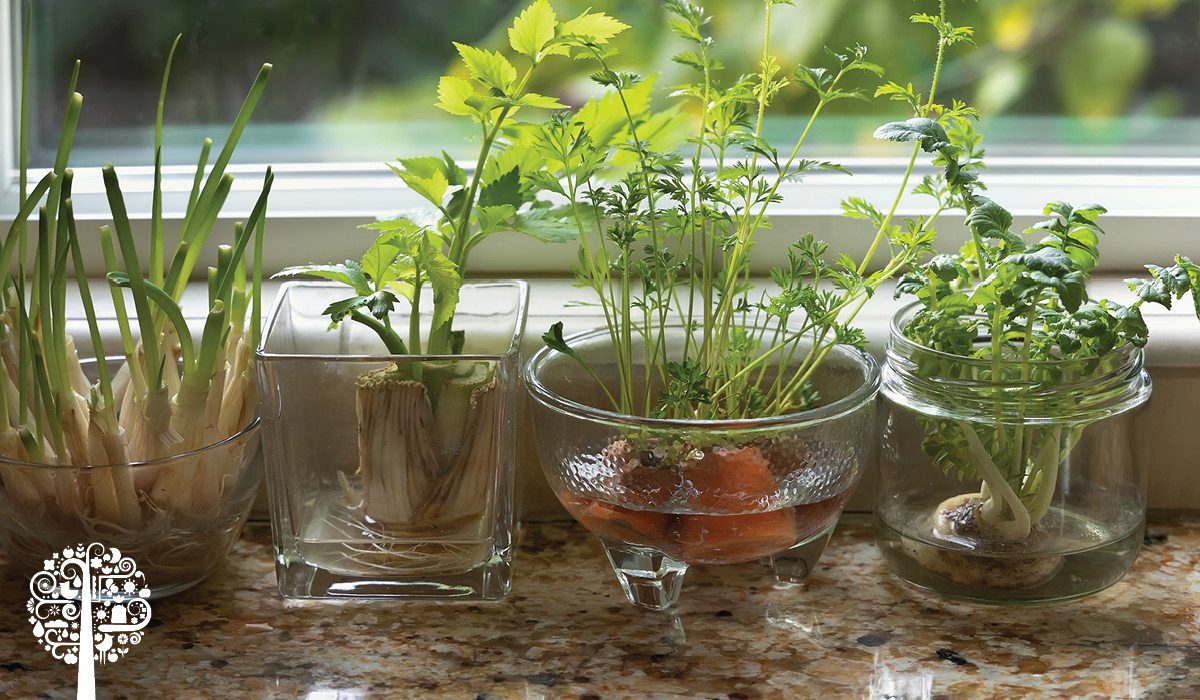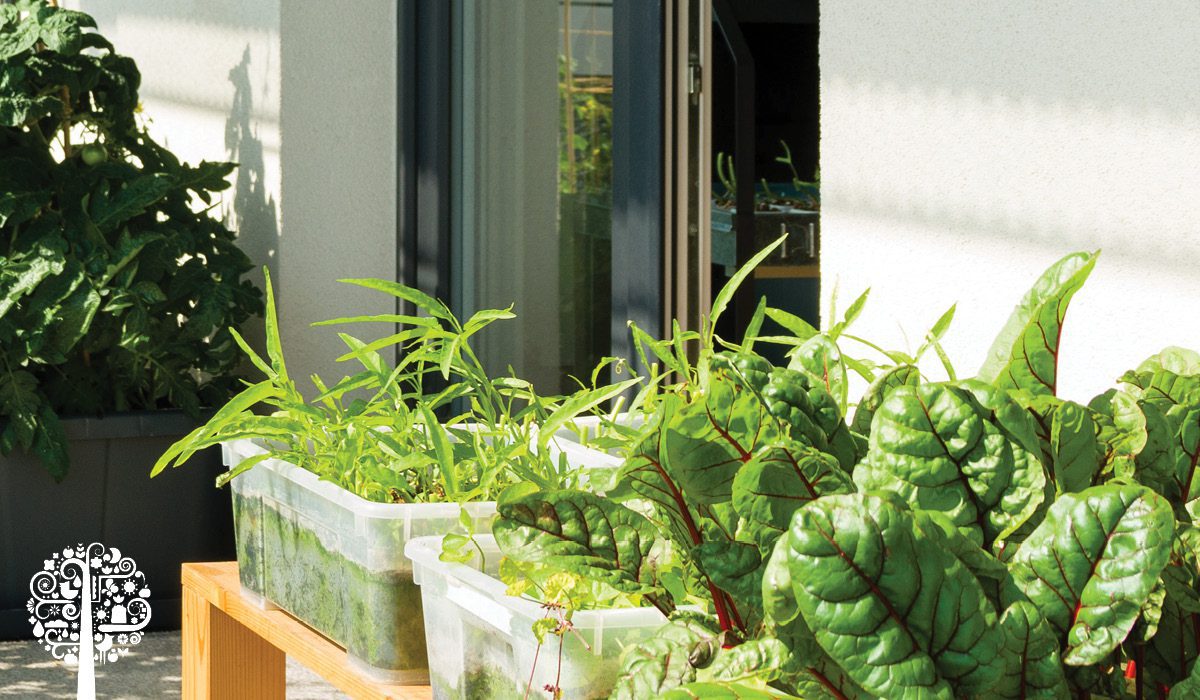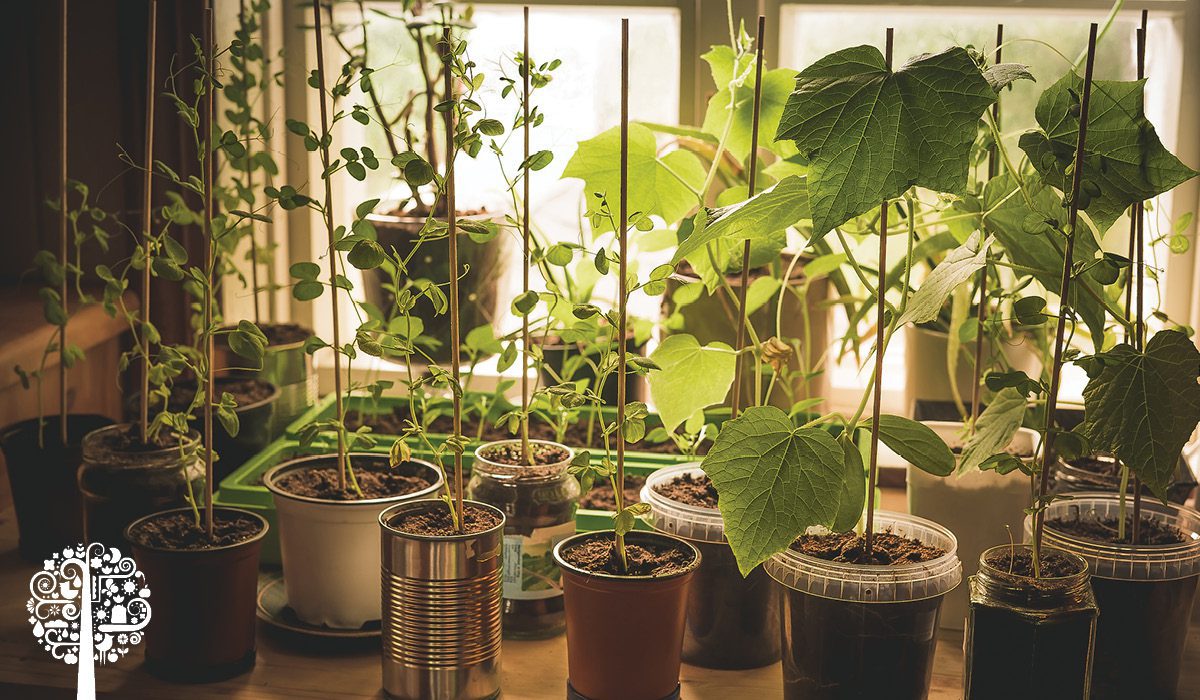Raised garden beds of ripening tomatoes or pole beans meandering up a trellis are a dream for many living in small urban spaces. But what if space didn’t matter? Imagine growing fresh vegetables – even carrots on a windowsill. With proper lighting, heat, the right soil, and containers, a year-round harvest of goodness is possible. Many of the vegetables a windowsill garden produces will surprise you.
Light
Most vegetables require six hours of sunlight a day. Tomatoes need eight to ten hours, and kale can survive with as little as four. A south-facing window exposed to light throughout the day or one that faces west to soak up the afternoon sun are good spots for a windowsill garden. Planting under a skylight or using an LED grow light during winter’s darker and shorter days are other good illumination sources.
Heat
Double pane windows keep cold out in the winter and retain heat in the summer. Single pane windows can be weather-stripped or covered with translucent plastic to add a layer of warmth and protection while still allowing light in.

A robust harvest is possible by applying the same methods to an indoor garden as an outside one. In winter, grow vegetables that thrive in cooler temperatures: kale, garlic, cabbage, or baby beetroot. Peppers, tomatoes, and basil are best in the summer.
Water, Containers, and Soil
A windowsill vegetable patch is a container garden. Plants grown in containers absorb water more quickly than if planted in the ground. Be water savvy. Overwatering can create fungal infections or drown tender seedlings. Use a water meter to gauge the dampness of the soil or feel the earth to determine if it’s cool and wet before watering.

Plant in porous containers with good drainage and airflow. Choose a potting soil with aeration mediums such as perlite or vermiculite. Add in organic compost, and plants will thrive.
Keeping Veggies Disease and Pest-Free
Windowsill plants, like most urban dwellers, live in high-density neighborhoods. This opens the door for aphids, mites, and whiteflies. Powdery mildew will hinder a tomato’s growth and spread. Companion planting, as in the outside garden, applies to the windowsill. Place a pot of basil, for example, alongside tomatoes to deter aphids. Spritzing with an organic spray every week is prophylaxis. Fifteen milliliters (one teaspoon) of baking soda, a few drops of liquid dish soap mixed with one liter of water will stay mildew, black spot, and insects. Using an organic fertilizer will keep plants healthy and better able to fend off infections. If the worst should happen – remove plant zero immediately from the group and rinse the remaining cluster with tap water.
Small Space – Big Harvest
Whether growing vegetables from seed or starter plants from a garden center, choose dwarf varieties for the windowsill and the space it affords. Microgreens are a popular choice and can be grown in small shallow trays that don’t take up much room. Baby shoots of salad vegetables such as arugula, swiss chard, or kale are packed with nutrition and flavor and can be harvested as soon as the first tiny leaves appear. As each leaf is picked, another will sprout.

Self-pollinating plants such as cherry tomatoes are great for a windowsill as they don’t need much help to flourish. They can be grown in 2-gallon (9-liter) containers or hanging baskets suspended from the ceiling to free up space. Green onions do well in a glass of water. Remove the top leaves and place the bulb in clear glass with roots facing down. Replace the water daily, and soon you’ll have a great harvest to use in salads or stir-fries. Dwarf varieties of carrots will thrive in containers 30 cm deep, while herbs are fine in smaller pots. Chili peppers enjoy a sunny windowsill while still leaving room for dwarf varieties of beans or peas planted in window boxes and trained up a string or small trellis. Baby beetroot, radish, and garlic can also be grown.
Space doesn’t have to limit the bounty a windowsill vegetable garden produces.